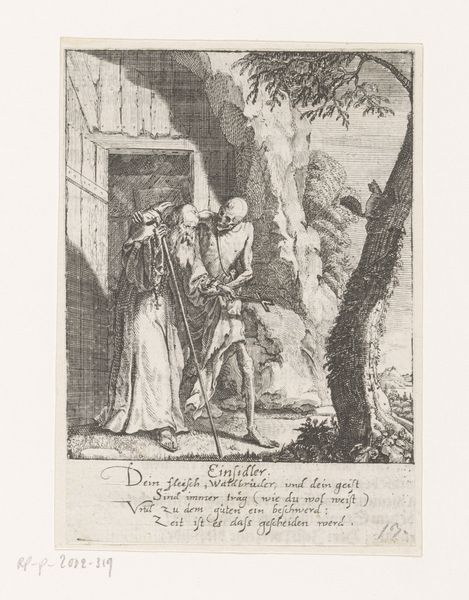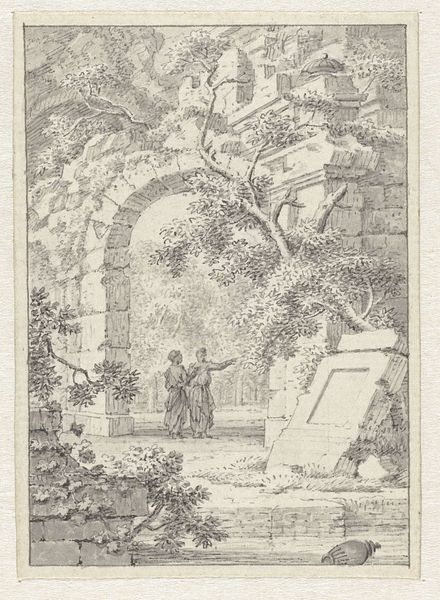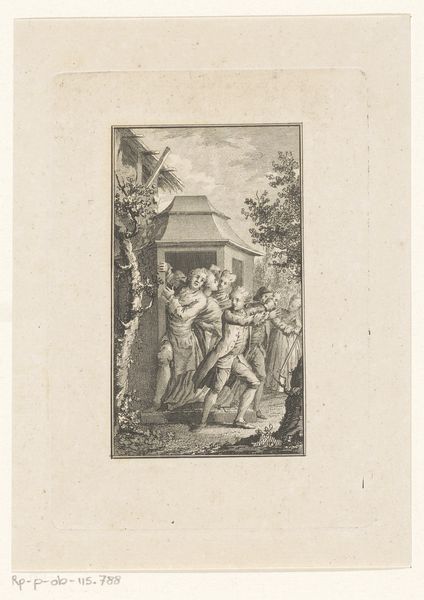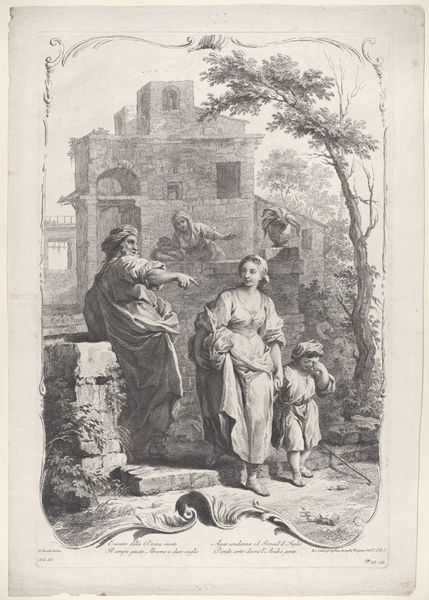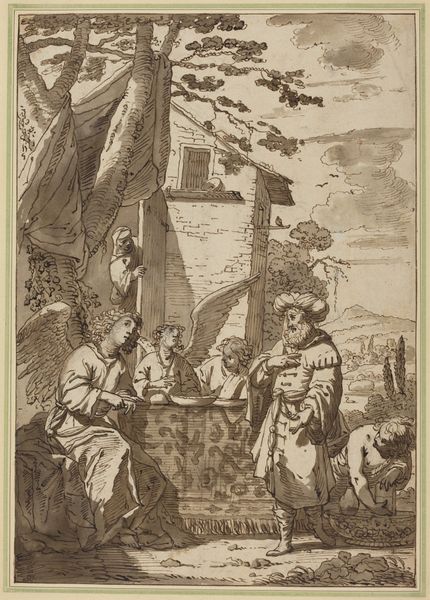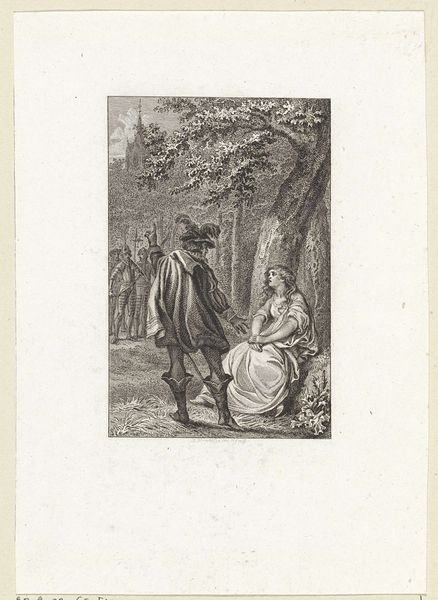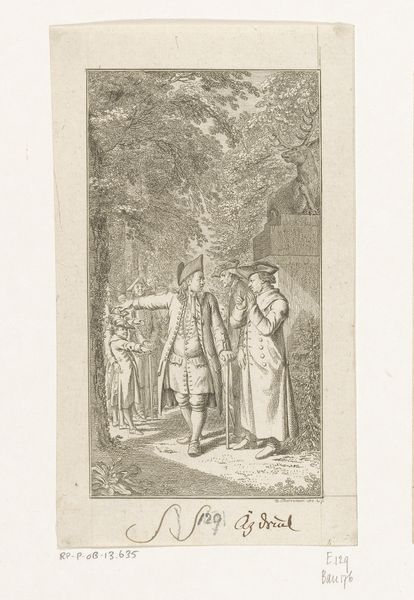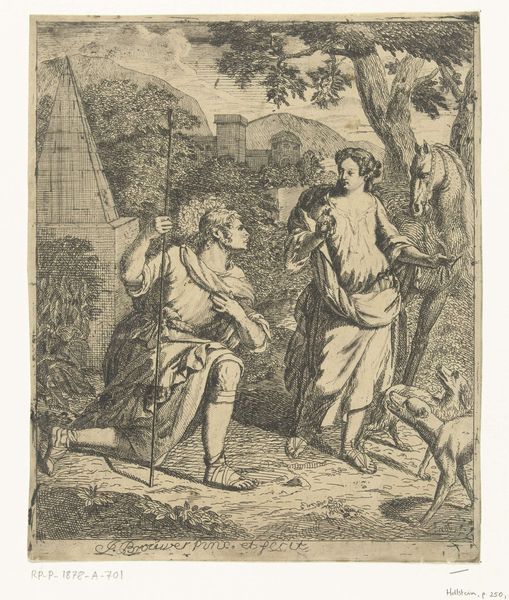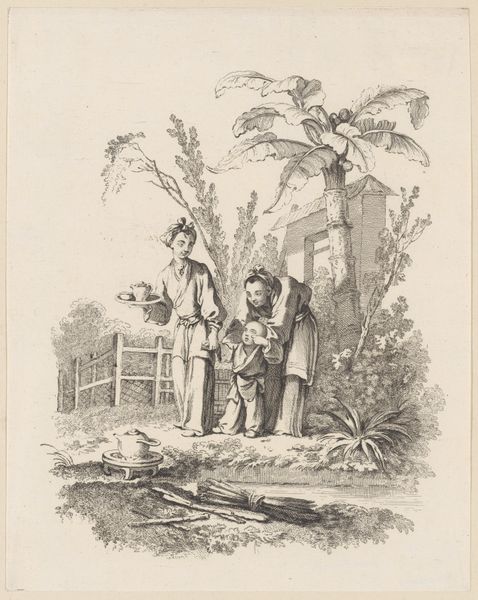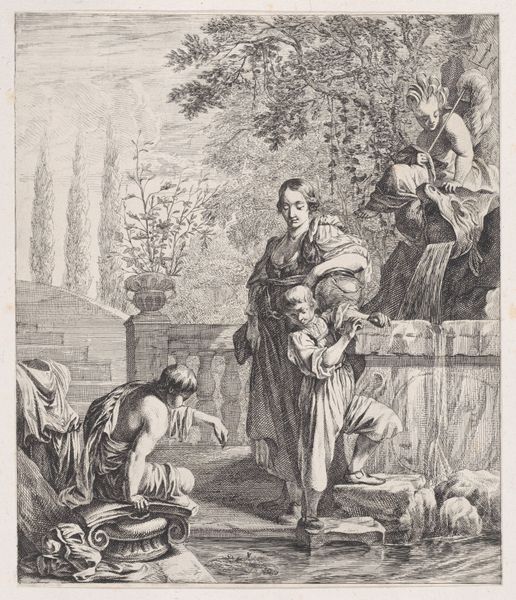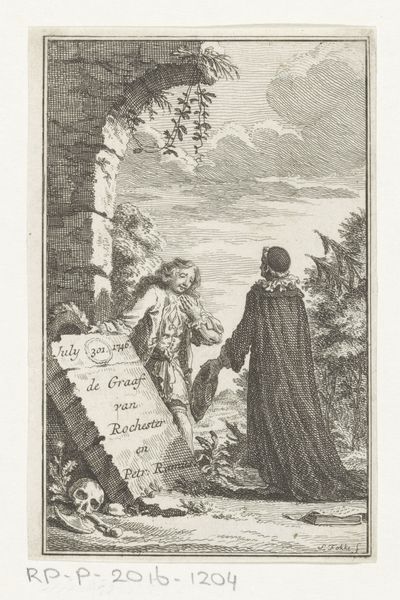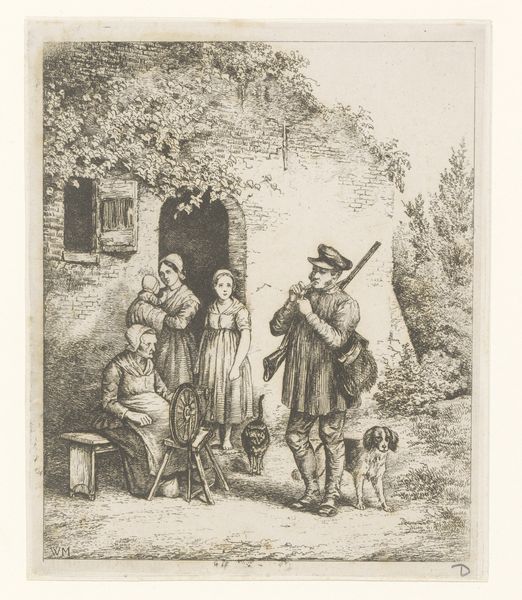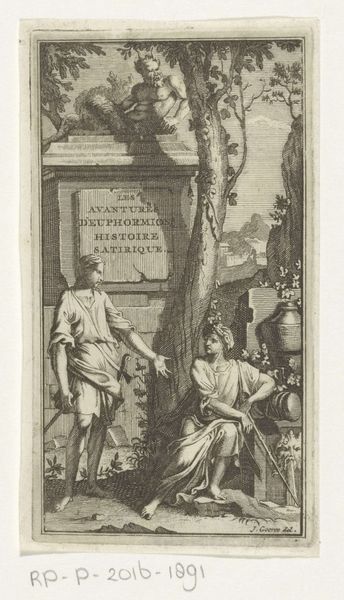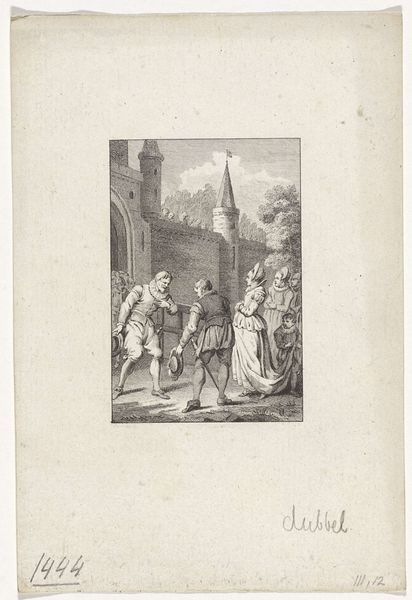
print, engraving
#
portrait
#
baroque
# print
#
figuration
#
line
#
genre-painting
#
history-painting
#
engraving
Dimensions: height 130 mm, width 81 mm
Copyright: Rijks Museum: Open Domain
Curator: This is an engraving from 1746 titled "Gesprek tussen Francis Bacon en François Eudes de Mézeray." It's a line print depicting a meeting between these two historical figures. My immediate response is its striking detail achieved solely through lines—remarkable printmaking. Editor: My attention is immediately drawn to the skull placed almost nonchalantly at the foot of the stone plinth. Is it a vanitas symbol, a memento mori whispering of mortality in the midst of their conversation? The placement is far from accidental. Curator: Exactly. Consider the materials—paper, ink, the engraver's tools. The artist skillfully manipulated these to produce intricate textures and create the illusion of depth. Note the way the cross-hatching defines form and shadows. This isn't just an image; it's a testament to skilled craft and reproductive technology of the 18th century, offering a mass audience imagery of notable figures. Editor: The garden setting framed by the arch, filled with classical architectural details and the figures, certainly invites a deeper reading. What conversation are the symbols having with each other? Is this a commentary on history, philosophy, the inevitable decay of earthly knowledge despite Bacon and Mézeray's attempts to capture it? Curator: What's also interesting is thinking about who produced this. An engraver working likely for a publisher or as part of a larger project. What sort of labor went into this production, and to what purpose? Disseminating knowledge to new audiences? Editor: It definitely points to a hunger for knowledge and engagement with history, using potent symbols that transcend the spoken word, allowing for interpretation far beyond that 18th century context. I would wager, it does this still today. Curator: Precisely! Examining the piece as a historical artifact, its value rests not solely in aesthetics, but in what it reveals about the social and economic structures supporting artistic production and intellectual exchange in its era. Editor: Thank you. Through the lens of materials and symbolic representation, we've hopefully enriched an understanding of its context and content.
Comments
No comments
Be the first to comment and join the conversation on the ultimate creative platform.
